In late May, severe floods swept through the Mid North Coast region of New South Wales, Australia, forcing thousands to evacuate and affecting over 50,000 people. As the waters receded, they left behind a trail of destruction and a community facing a long and arduous path to recovery. On June 13, a team of six Tzu Chi volunteers, led by Sydney branch CEO Randy Sung (宋以剛), traveled more than 300 kilometers to the affected Taree area to understand the needs of the community and offer support.
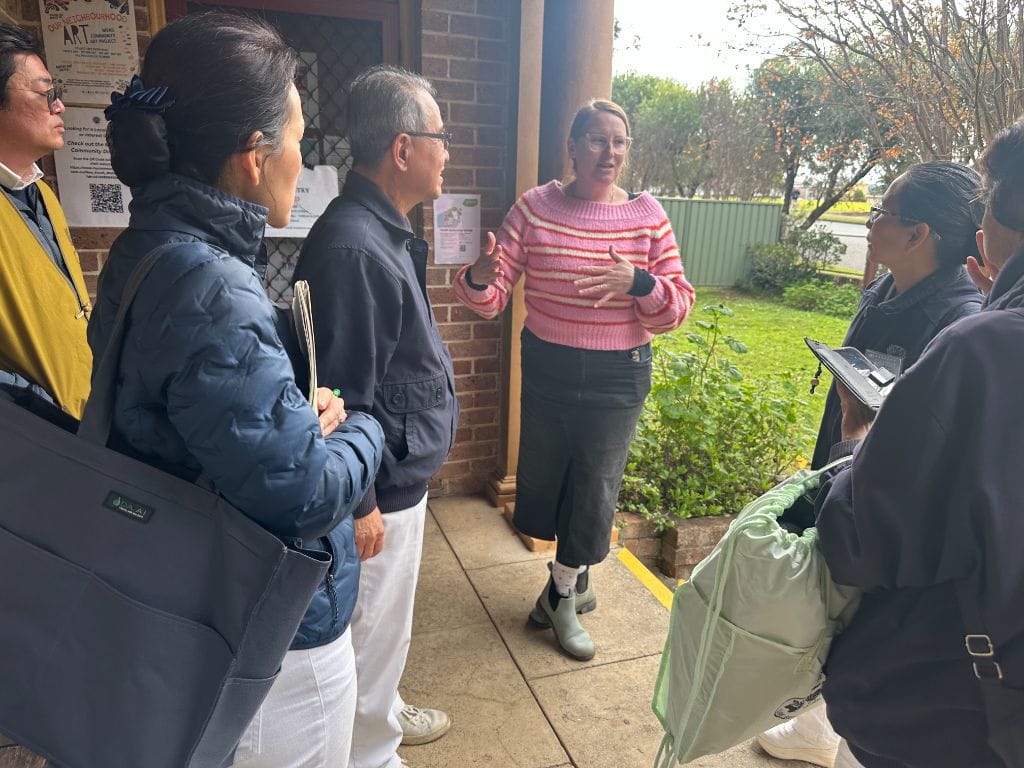
Voices from the Ground
The volunteers first met with Jane O’Dwyer, the Community Development Director for the Mid North Coast region, and local volunteers Mary and Tammy. Jane explained the immense challenge of the relief effort, with the disaster zone covering a vast and scattered area. "The relief work has been slow and difficult," she noted, highlighting the particular struggles of farmers in remote, hard-hit areas.
Many survivors are grappling with complex application processes for government aid, leaving them feeling hopeless and uncertain about when they can rebuild their lives. For some, the emotional toll has led to depression.
Mary, a resident who became a volunteer after witnessing the flood's impact, shared the gravity of the situation. "This was a one-in-500-year flood," she said, describing how the Manning River swelled, engulfing low-lying areas like Mitchell Island and Oxley Island. She has been particularly concerned about the heavy blow dealt to elderly residents, which inspired her to join the relief efforts.
Tammy, another volunteer focused on reconstruction, spoke of the heartbreak faced by farming families. "The worst-hit are the farming households. Many century-old farms have been completely destroyed," she said. Despite their losses, many elderly farmers are reluctant to leave their land for temporary shelters. Tammy is now working to compile a list of over one hundred affected households spread across different islands, a difficult but necessary task.
As the volunteers listened, they offered not just a compassionate ear but also a tangible gesture of warmth. Kim Lee (李金芯) draped eco-friendly blankets over the shoulders of the local relief workers, explaining that they were made from recycled plastic bottles. In the winter chill, the warmth of the blankets and the story of their creation brought a moment of comfort and surprise.
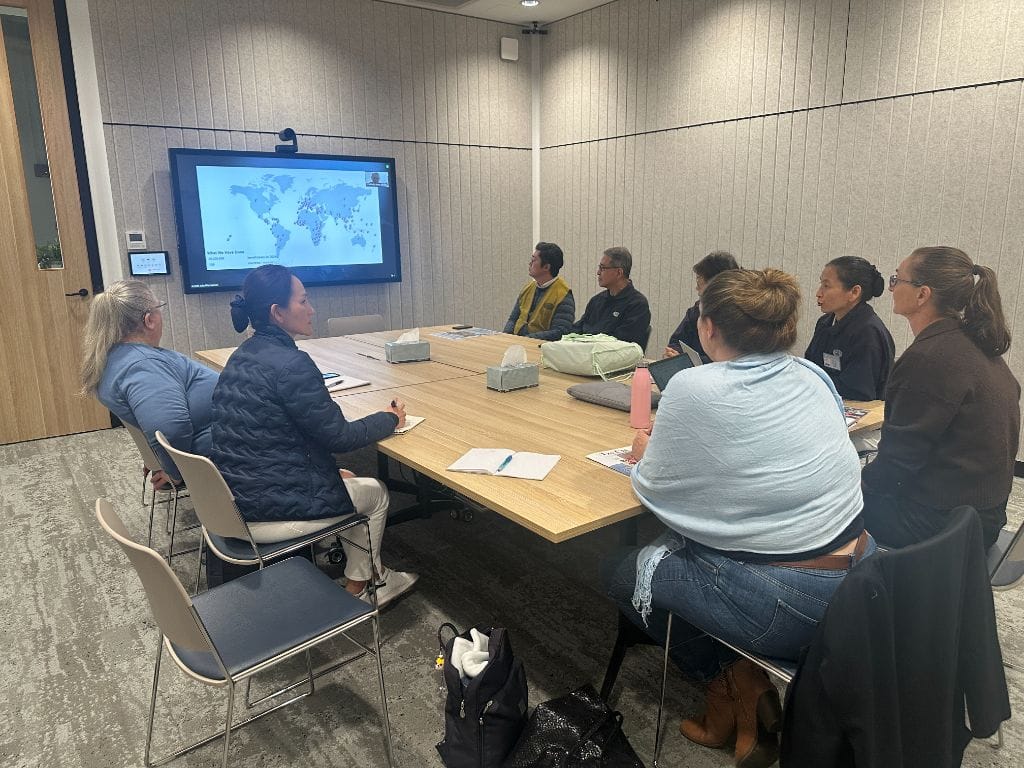

LEFT: Led by Randy Sung, CEO of Tzu Chi Australia, the Tzu Chi team meets with Community Development Director Jane O’Dwyer (left), Tammy (second left), and Mary (third left) for an initial disaster assessment. RIGHT: Volunteer Julia Wu (吳如玉) (left) shares Tzu Chi’s global relief experiences with Jane and Tammy (right), while Kim Lee (second right) offers them eco-friendly blankets. | Photo: Anita Chan (陳蕙玲) | Australia | 2025/06/13
A Hub of Hope in a Former Courthouse
The team then visited the Manning Valley Neighbourhood Center in Wingham, a space that has transformed from a former courthouse into a hub for disaster relief supplies. The center’s manager, Kate, pointed towards the river. "When that river flooded, the water level was higher than the orange trees here," she recalled, sharing photos of the deluge.
Despite the devastation, the community’s spirit of generosity is evident. A local supermarket, though still closed due to flood damage, donated 10,000 AUD (about 6,566 USD) to the center and has committed to providing 500 AUD (about 328 USD) worth of weekly supplies for twenty weeks. The Tzu Chi team contributed seven food packs, hoping to return to the historic courthouse to distribute cash cards to families in need.
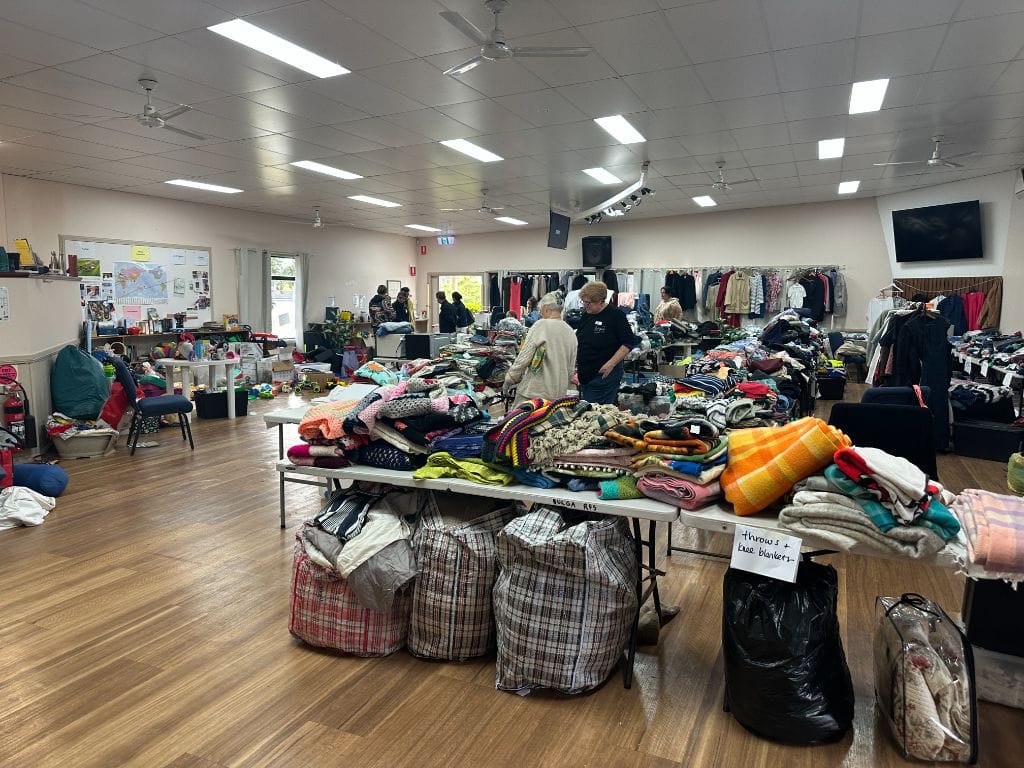
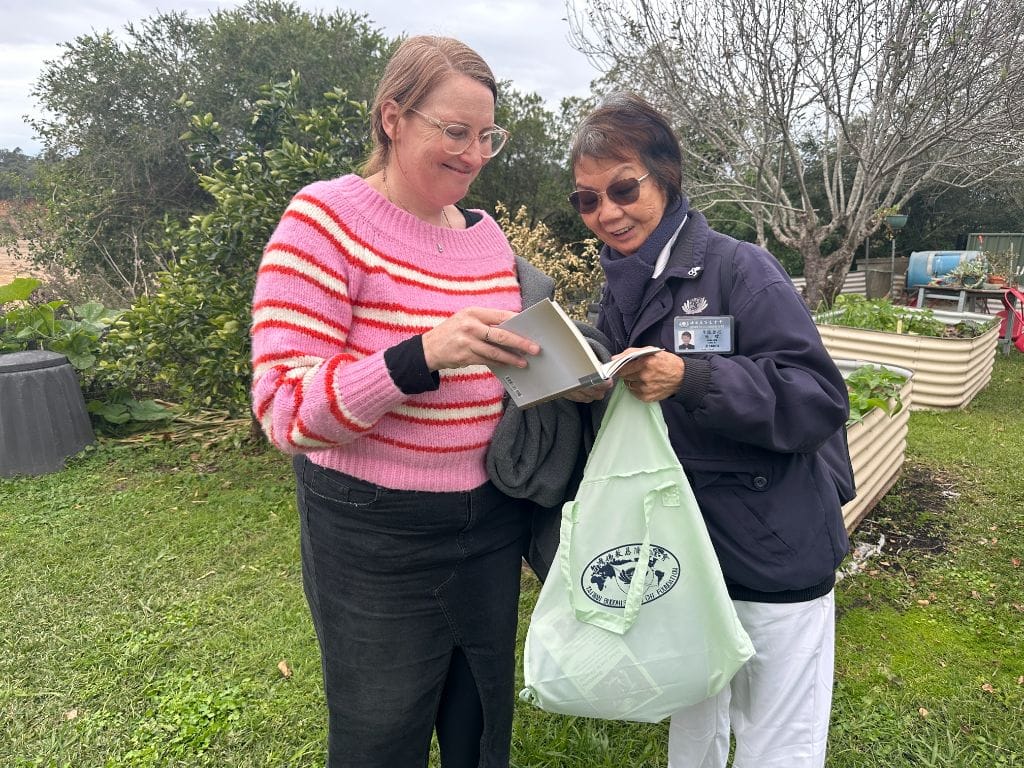
LEFT: The Manning Valley Neighbourhood Center in Wingham, a former courthouse, now serves as a distribution hub filled with donated relief supplies. | Photo: Anita Chen | Australia | 2025/06/13. RIGHT: Kate (left), manager of the Manning Valley Neighbourhood Center, recounts the harrowing flood as volunteer Kim Lee shares words of encouragement and a Jing Si Aphorism card. | Photo: Anita Chan | Australia | 2025/06/13
Comprehensive Care and Future Plans
At the Wingham Flood Hub, a temporary distribution center set up in a local church, the volunteers met Lauren, the person in charge. Her own office was flooded, but she dedicates her time to helping others at the hub. The center is well-organized, with sections for clothing, toys, books, and daily necessities.
More importantly, it offers holistic care. "If survivors come here feeling sad, we have professional psychological counselors on-site to provide support," Lauren explained. "We also have nurses who can help with things like cleaning wounds."
After assessing the situation and listening to the community's needs, the Tzu Chi team began formulating a plan. Their initial thoughts are to assist with regular purchases of food supplies to help stabilize the lives of survivors.
On their journey back to Sydney, the volunteers drove along the banks of the Manning River. The lingering signs of the disaster were clear: piles of fallen trees, roads still marked as closed, and homes standing in ruins. While the main roads were open, repair work was visibly ongoing. Volunteer Hsien-Hui Pi (皮賢慧) reflected on the experience, "Tzu Chi people enter disaster areas not just to deliver supplies, but to convey that there is love in the world. We must turn sorrow into strength and let goodness and love continue." The road to recovery for these communities in New South Wales is long, but they will not walk it alone.
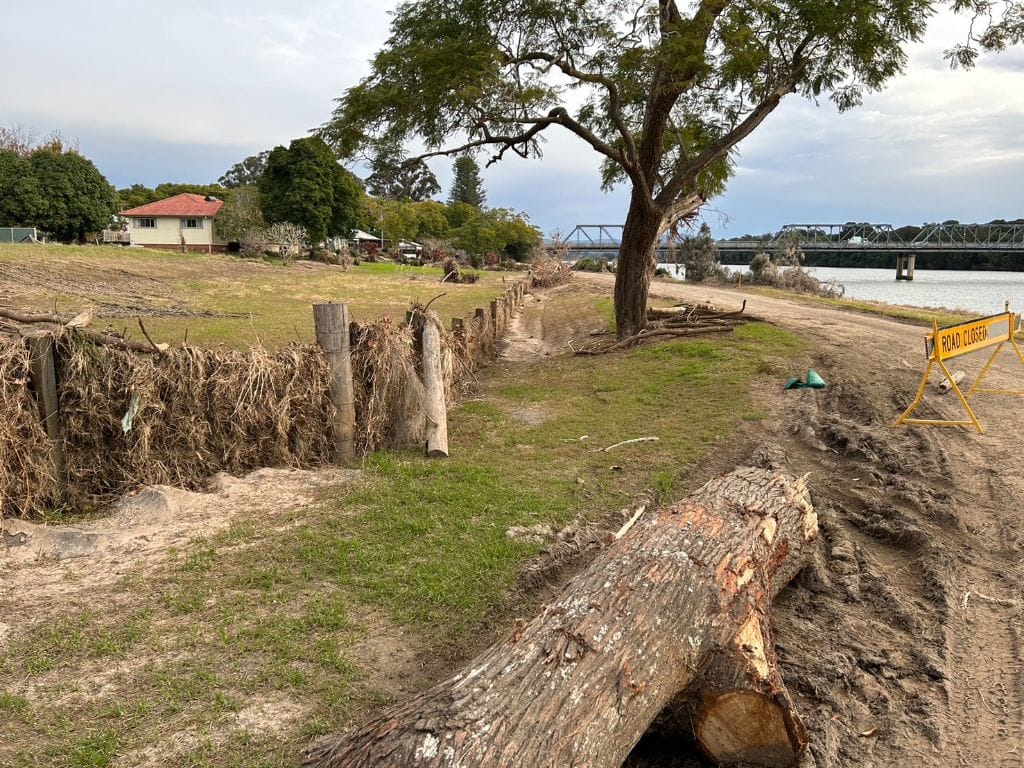
Written by Sandy Ting (丁瑟琴), Anita Chen (陳蕙玲) and Hsien-Hui Pi (皮賢慧)
Source: 澳洲居民寒冬遇水患 慈濟志工深入勘災




